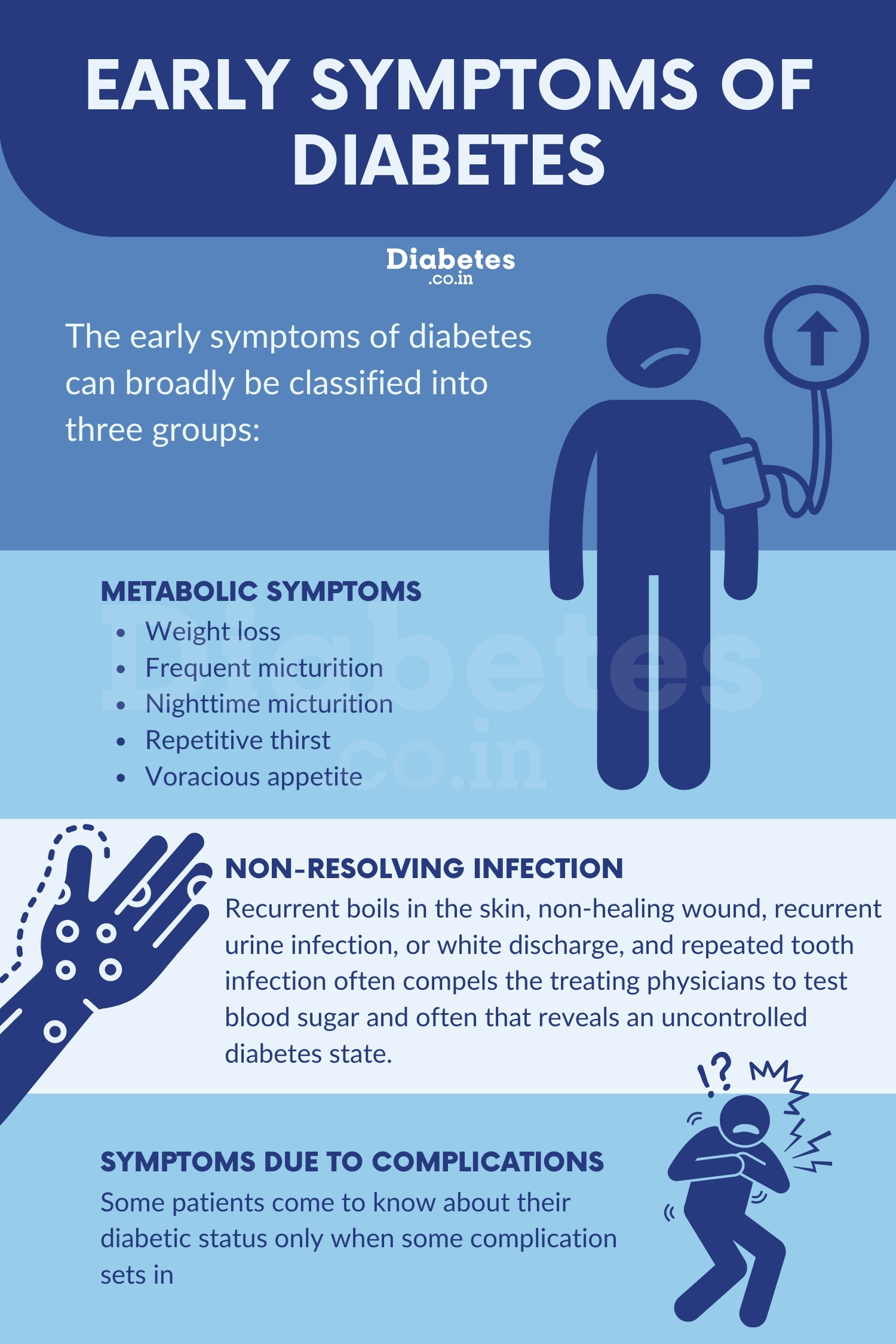Most of the people who have diabetes do not have any symptoms at disease onset. The only way to detect diabetes in the early stage is – Test, Test, and Test.

Still, there are many reasons why people go for a blood sugar (glucose) test. The symptoms can broadly be classified into three groups:
- Metabolic symptoms
- Non-resolving infection
- Symptoms due to complications
1. Metabolic symptoms like :
- Weight loss
- Frequent micturition
- Nighttime micturition
- Repetitive thirst
- Voracious appetite
The above-listed symptoms can be presenting features for most type 1 diabetes and a few type 2 diabetes people. These are considered as classic symptoms of diabetes.
2. Non-resolving infection:
- Recurrent boils in the skin, non-healing wound, recurrent urine infection, or white discharge, and repeated tooth infection often compels the treating physicians to test blood sugar and often that reveals an uncontrolled diabetes state.
3. Symptoms due to complications:
- Some patients come to know about their diabetic status only when some complication sets in.
- Not surprisingly, a significant number of patients are 1st time diagnosed at cardiac or stroke unit when they present with a heart attack or brain stroke.
- Many patients complain of a tingling sensation of feet or visual blurring, indicating nerve or eye damage.
As per the American Diabetes Association (ADA) guidelines, one should not wait for symptoms to develop. Rather periodic screening for diabetes should be done as per their risk factor profile.
Their recommendation for the age of testing is given below.
1. Testing should be considered in overweight or obese (BMI >23 kg/m2 in Asian Americans) adults (>18 years age) who have one or more of the following risk factors:
- First-degree relative with diabetes
- High-risk race/ethnicity (e.g., African American, Latino, Native American, Asian American, Pacific Islander)
- History of CVD
- Hypertension (>140/90 mmHg or on therapy for hypertension)
- HDL cholesterol level ,35 mg/dL (0.90 mmol/L) and/or a triglyceride level .250 mg/dL (2.82 mmol/L)
- Women with polycystic ovary syndrome
- Physical inactivity
- Other clinical conditions associated with insulin resistance (e.g., severe obesity, acanthosis nigricans)
2. Patients with prediabetes should be tested yearly.
3. Women who were diagnosed with Gestational diabetes (GDM) should have lifelong testing at least every 3 years.
4. For all other patients, testing should begin at age 45 years.
5. If results are normal, testing should be repeated at a minimum of 3-year intervals, with consideration of more frequent testing depending on initial results and risk status.

